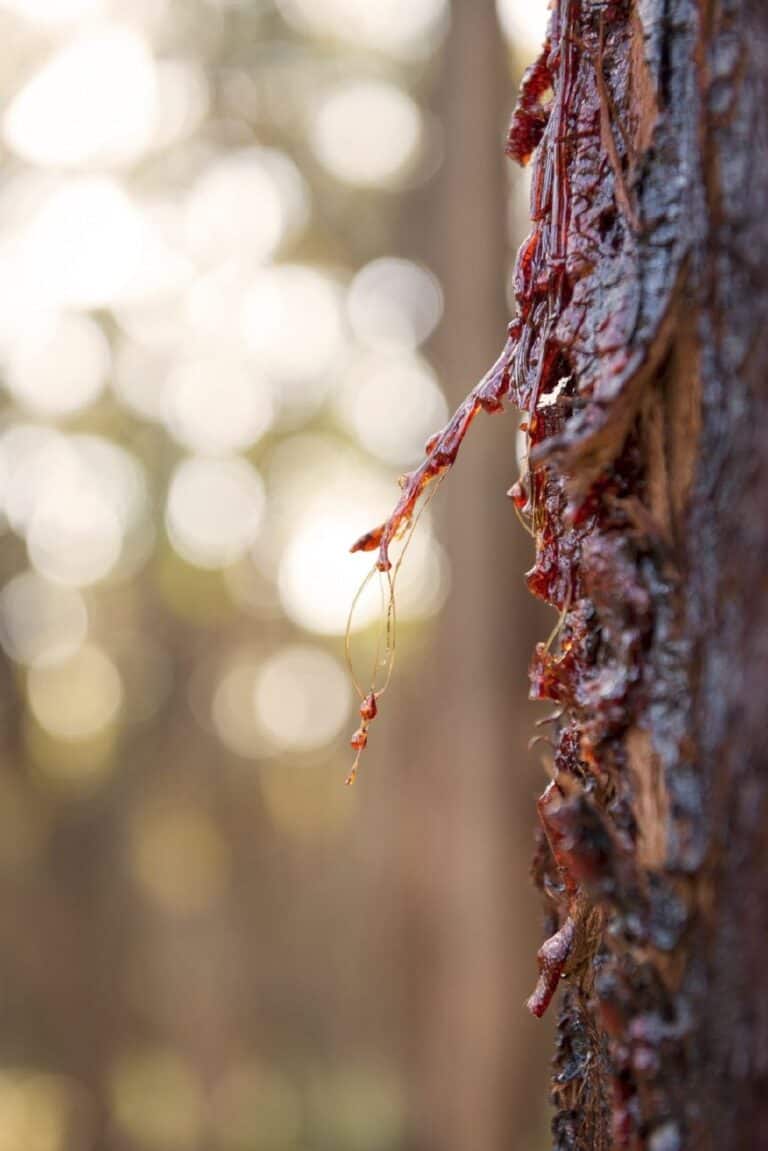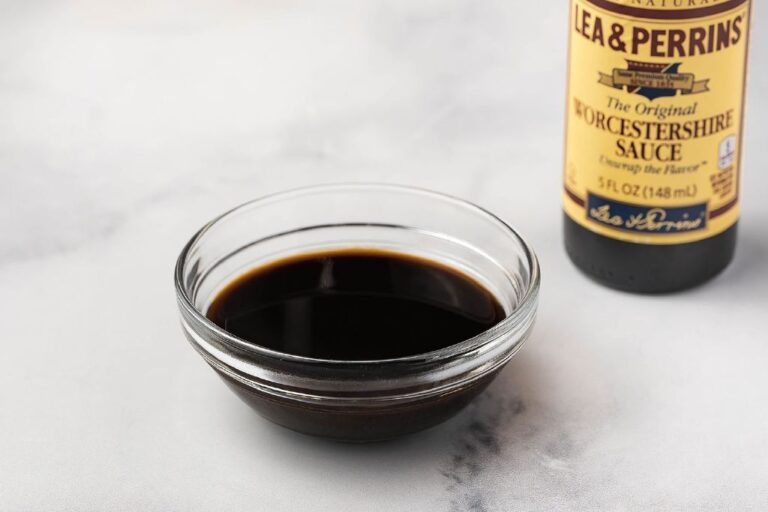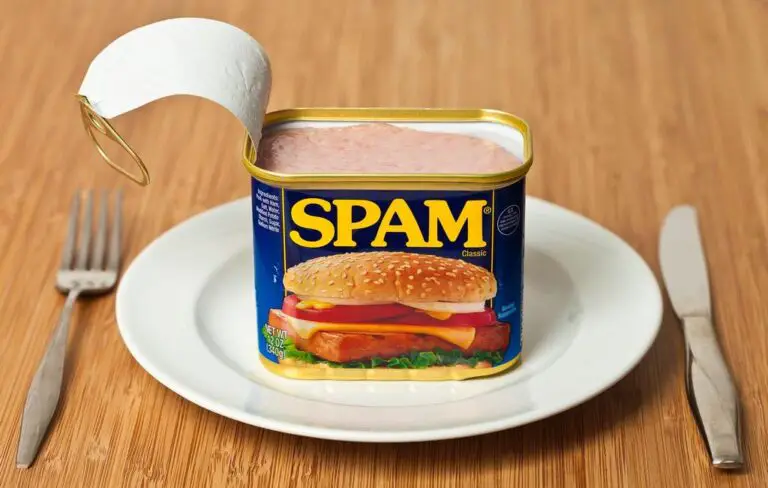Can You Eat Expired Spam or Past the Best by Date?
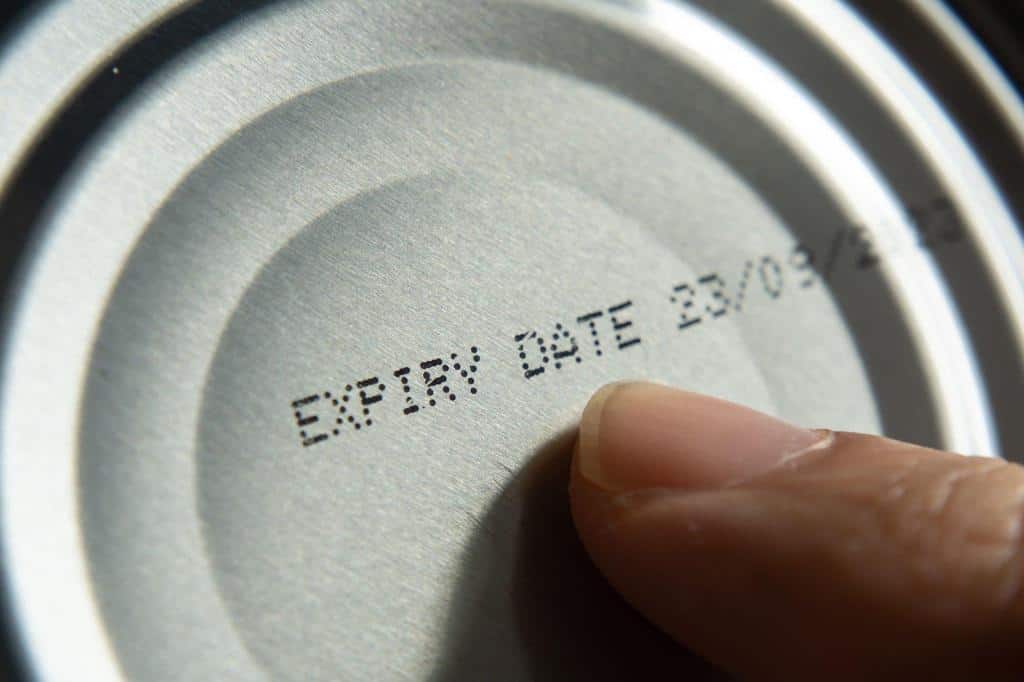
In the depths of your pantry, behind the long-forgotten cans of beans and tomato soup, you stumble upon a dusty relic from the past – a can of Spam. You squint at the faded label, and there it is, the moment of truth: the “Best By” date has come and gone.
The question looms large, can you still savor the nostalgic taste of Spam, or is it time to bid adieu to this canned classic?
Spam has an indefinite shelf-life because of the preservative sodium nitrite, which prevents oxidation of the fats and lipids in Spam from occurring and also prevents the growth of botulism-causing bacteria and spoilage. As a result, Spam does not have an actual expiration date but instead has a “best by” date, which signifies the time that the can is at its peak freshness.
In this article, we embark on a journey to unravel the enigma of expired Spam.
We’ll delve into the nuances of those cryptic expiration dates, explore the science behind canned meat longevity, and equip you with the wisdom to decide whether your old Spam is a hidden treasure or a ticking time bomb.
So, fasten your seatbelts, dear readers, as we navigate the world of vintage Spam and embark on a flavorful quest for answers!
Basics of Spam
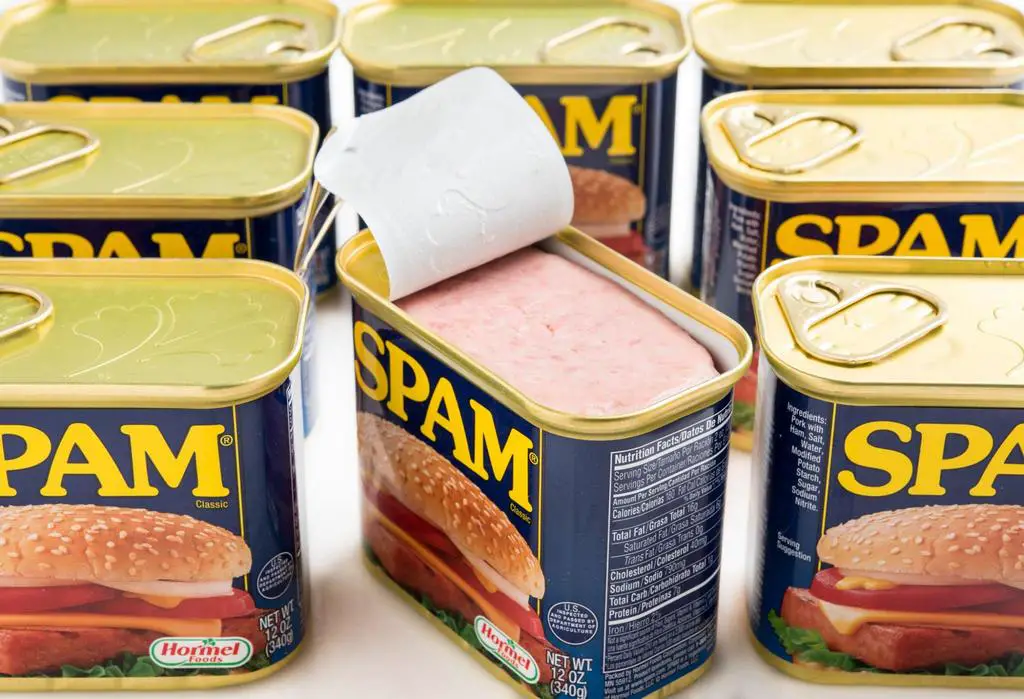
Spam, a popular canned meat product, has been a pantry staple for decades, known for its versatility and convenience. Comprising primarily pork and ham, along with a blend of various seasonings, its unique taste and long shelf life make it a favorite for many.
However, despite its widespread use, it’s essential to understand some fundamental aspects. First, recognizing the significance of the “best by” date is crucial; it indicates the period during which the product is at its peak quality but doesn’t necessarily imply spoilage afterward.
Second, being aware of the signs of spoilage is key, as changes in color, texture, or an off-putting odor could indicate bacterial growth or chemical breakdown.
Third, understanding the impact of storage conditions on its shelf life is vital. Factors like temperature and humidity can significantly affect its quality, potentially leading to premature spoilage if not stored appropriately.
Moreover, exploring the composition of Spam can provide insights into its preservation methods. Understanding the role of preservatives in extending its shelf life can offer clarity on its lasting freshness. Additionally, considering creative ways to utilize Spam can open up new culinary horizons, with various recipes incorporating it in inventive and delicious ways.
Finally, being mindful of responsible consumption and reducing food waste can contribute to sustainable living. With proper storage, a thorough examination of its quality, and informed consumption practices, Spam can continue to be a reliable and enjoyable addition to many meals.
Understanding Food Expiration Dates
Before we delve into the world of expired Spam, it’s important to understand what those dates on the packaging mean. Most canned goods, including Spam, come with two main types of dates:
- Best By Date: This is a suggestion by the manufacturer regarding when the product is at its peak quality. It’s not a strict deadline but rather a guideline for optimum taste and texture.
- Expiration Date: This is more critical. It signifies the date after which the food may not be safe to consume.
For Spam, you’ll typically find a “Best By” date on the can, which is different from an expiration date. So, when you see that your can of Spam is past its “Best By” date, don’t panic just yet.
Is It Safe to Eat Expired Spam?
While eating expired food is generally not recommended, the truth is that Spam can be an exception. Due to Spam long shelf life and the way it is processed, Spam can often be safely consumed even after its best by date has passed.
This canned meat product has high levels of sodium and preservatives that help prevent bacterial growth and food spoilage.
The short answer is: Yes, it can be safe to eat expired Spam, but it depends on several factors.
1. Can Condition
The first thing you should check is the condition of the can. Spam cans are commonly made of metal, specifically aluminum and tin-coated steel. If the can is damaged, dented, or bulging, it’s a clear sign that you should not consume the contents. A damaged can can compromise the safety of the food inside, allowing harmful bacteria to grow.
2. Storage Conditions
The way you’ve stored the Spam plays a crucial role in its safety. If you’ve kept it in a cool, dry place and away from direct sunlight, it’s more likely to remain safe for an extended period. However, if it has been exposed to temperature extremes or moisture, the risk of spoilage increases.
3. Appearance and Smell
When you open the can, check the Spam for any signs of spoilage. If it looks or smells off, it’s best to discard it. If it appears normal and smells okay, it’s likely safe to eat.
4. Use Your Senses
Taste a small bit first. If it tastes strange or off, spit it out immediately, and don’t consume any more. Your taste buds can often detect spoilage before other signs become apparent.
5. Common Sense
Lastly, use common sense. If your Spam is only slightly past the “Best By” date and appears perfectly fine, it’s probably safe. But if it’s several years expired and shows signs of spoilage, it’s best to err on the side of caution.
Can You Eat Past the Best by Date Spam?
A product that doesn’t bear an expiration date but rather boasts a “best by” date, indicating when it’s at its prime. Beyond this date, Spam remains safe to eat, though it may undergo alterations in appearance, flavor, and nutritional content.
However, it’s important to emphasize that the quality of Spam diminishes over time. Soo for optimal enjoyment, consider consuming it within two to three years after the best-by date.
If the can remains undamaged, it remains a viable option. Yet, vigilance is key. If you spot any warning signs, such as a compromised seal, a bulging can, or rust on the container, it’s essential to err on the side of caution.
Spoiled Spam can pose health risks, making it advisable to discard it when in doubt. In essence, while Spam may have an indefinite shelf life, using it responsibly ensures a tasty and safe experience.
Here’s a summary in a table format:
| Aspect | Information |
| Preservative | Sodium nitrite |
| Shelf Life | Indefinite, with a “best by” date |
| Post-Best-By Period | Safe to eat, but quality may decline |
| Recommended Limit | Consume within 2-3 years after best by date |
| Warning Signs | Broken seal, bulging can, rust on the can |
| Safety Priority | Discard spoiled Spam to avoid health risks |
Read: How to Make Spam Taste Good and Better
Risks Associated with Consuming Expired Spam
While eating slightly expired Spam may not pose significant health risks if it’s been stored properly, there are still some potential concerns:
- Food Poisoning: The most significant risk is food poisoning. If the canning process was not entirelyeffective, or if the can was damaged, bacteria can thrive in the moist environment within the can. Consuming such bacteria can lead to gastrointestinal issues.
- Nutritional Quality: Over time, the nutritional quality of Spam may deteriorate. Vitamins and minerals can break down, and the flavor may change. So, while it might not make you sick, it may not be as enjoyable or nutritious as fresh Spam.
- Textural Changes: Texture is also a consideration. Expired Spam might become mushy or overly tough, affecting the dining experience.
When in Doubt, Throw It Out
The saying “When in doubt, throw it out” applies here. If you have any reservations about the safety of the Spam you’ve found, it’s best to dispose of it. Your health is not something to gamble with, especially when fresher alternatives are readily available.
However, if you’re feeling adventurous and the Spam appears to be in good condition, you can consider using it in a cooked dish where any potential issues are more likely to be eliminated through the cooking process.
What Are Some Alternatives to Spam
When you’re seeking alternatives to Spam, you’ll discover a range of choices to suit various tastes and dietary preferences. Here are some of the top alternatives:
- Holiday Luncheon Meat: A classic luncheon meat that closely resembles the texture and taste of Spam.
- OmniPork Luncheon: A plant-based alternative for vegetarians and vegans.
- Potted Meat: Potted Meat is not like Spam as it offers a spreadable texture and can be used in sandwiches or as a dip.
- Deviled Ham: Known for its slightly spicy flavor, it is a perfect option for those who enjoy a kick.
- Beyond Breakfast Sausage: Great for breakfast recipes and ideal for those who prefer a meatless option.
- Deli Slices: Available in various flavors, these thinly sliced meats are versatile for sandwiches and salads.
- Jambon: A French alternative with a distinct European taste.
Keep in mind that the nutritional content varies between these options. Be sure to check the labels to select products that align with your dietary needs, whether you’re concerned about sodium, fat, or specific ingredients.
With these alternatives, you can enjoy the convenience and versatility of luncheon meats while catering to your individual preferences.
Related: Cook or Heat Canned Food in the Can or Container: Is it Safe?
Conclusion
In the end, the safety of eating expired or past best-by-date Spam comes down to several factors: the can’s condition, storage, appearance, smell, taste, and common sense.
While it’s generally safe to eat Spam slightly past its “Best By” date if it’s well-preserved, caution is essential. Always prioritize food safety and trust your instincts. When in doubt, remember the golden rule: “When in doubt, throw it out.”
Please note that this information is for guidance only, and if you have any concerns about food safety or specific health conditions, it’s advisable to consult with a healthcare professional or nutritionist.
FAQs on Expired Spam Eating Safety
What happens if you eat expired Spam?
Eating expired Spam might lead to food poisoning or gastrointestinal discomfort due to bacterial contamination or degradation of the product’s quality.
Can you get food poisoning from eating expired canned food?
Yes, eating expired canned food, including Spam, increases the risk of contracting food poisoning from pathogens like Clostridium botulinum or other bacteria.
How long is Spam good after the expiration date?
Spam’s safety after the expiration date varies. Generally, it’s advisable to discard it after the expiration date for optimal food safety.
Can you taste if Spam has gone bad?
Detecting spoiled Spam is possible through changes in color, texture, or odor, indicating bacterial growth or chemical degradation.
Can you cook expired Spam to make it safe to eat?
Cooking expired Spam doesn’t ensure its safety, as some toxins or harmful byproducts produced during spoilage might remain even after cooking.
Can freezing extend the shelf life of canned products like Spam?
Freezing can extend the shelf life of some canned products temporarily, but it might affect the texture and quality of the Spam upon thawing.
What are some healthy alternatives to consuming processed canned meats like Spam?
Opt for fresh or frozen lean meats, legumes, and plant-based proteins as healthier alternatives to processed canned meats like Spam.

